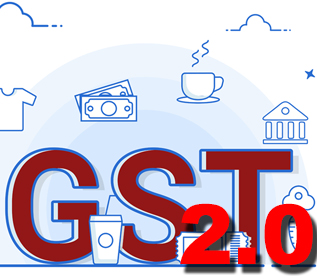The Goods and Services Tax (GST) is set for its biggest reform since 2017, With the government working on a revamped structure, popularly known as GST 2.0, aimed at making essentials cheaper, simplifying tax slabs, and boosting the economy.
For the common man, this reform is not just about tax rules; it’s about lower bills, affordable services, and greater savings each month.
What the Government is Planning
1. Rate Rationalisation
• Moving towards a simplified two-slab GST structure: 5% and 18%, with a 40% rate reserved for luxury and sin goods.
• Everyday essentials such as food, textiles, and medicines are likely to be shifted to the lower 5% category.
• Insurance premiums, salon services, cement, and small cars are also under review for possible rate reductions.
2. Boosting Consumption and Growth
• With reduced prices on commonly used goods, the government anticipates a significant rise in consumer demand.
• Analysts project that these reforms could contribute an additional 0.6 percentage points to GDP growth in the coming year.
3. Implementation Timeline
• The GST Council is scheduled to meet on September 3–4, 2025.
• The revised GST rates are expected to be rolled out by mid-September, strategically timed ahead of the festive season, to maximise impact.
Anti-Profiteering Ensuring Consumers Get the Benefits
The anti-profiteering provisions under GST were introduced to make sure that any reduction in tax rates directly benefits consumers. In simple terms, when GST on a product drops; for example, from 18% to 5% – the MRP should also reduce accordingly, ensuring that the savings are passed on to the end consumer.
• Sunset Clause: The anti-profiteering law officially came to an end on April 1, 2025. No new complaints can be filed, and all pending cases are being transferred to the GST Appellate Tribunal.
• Possible Revival: To support the upcoming GST reforms, the government is considering reintroducing anti-profiteering provisions for a period of two years. This move aims to ensure that businesses pass on the benefits of reduced tax rates to consumers instead of retaining them as additional profits.
What It Means for You
• Lower prices on groceries and clothing
• Reduced insurance premiums
• More affordable two-wheelers and small cars
• Cheaper services like salons, healthcare, and more
• Extra savings and more money left at the end of the month
Conclusion
The Bigger Picture
For households, this reform means more breathing space in monthly budgets. For businesses, it promises simpler compliance and higher demand. And for the economy, it signals stronger consumption growth, especially during the festive season.
In short, GST 2.0 is designed to make life simpler, essentials more affordable, and your savings grow bigger.
